Pollen is a fine yellow powder transferred from plant to plant by birds, insects, wind, and other animals.
Pollen spreading supports plant growth but can be miserable for those sensitive to it during particular periods of the year.
People who are sensitive to pollen may have symptoms like these when exposed to pollen in the air:
- Wheezing
- Throat itching
- Sneezing and nasal congestion
- Discharge from the nose
- Watery, itchy eyes
What Is Pollen Allergy?
One of the most common kinds of allergy is an allergy to pollen, also known as hay fever. Pollen allergies affect the lives of tens of thousands of people worldwide. Pollen allergies develop when the body’s immune system wrongly identifies the harmless substance as a harmful intruder. Allergy symptoms are more common during times of the year when certain types of pollen are more prevalent, which is why sufferers can often predict when their symptoms will strike. Pollen Allergy can be diagnosed with the help of allergy tests, a thorough physical examination, and a study of the patient’s medical record.How Does Pollen Affect People Who Suffer From Asthma?
Asthma sufferers often experience an attack after being exposed to pollen from trees and grasses. A person’s asthma or hay fever symptoms may worsen or flare up. Pollen has several effects on those who suffer from asthma, including the following:- Pollen is a common allergen that causes allergic reactions in Asthmatics, including a runny nose, itchy eyes, and sneezing.
- Pollen can cause edema and inflammation in the airways due to irritation of the airway lining. This can make it more difficult to take a deep breath, triggering an asthma attack.
- Asthmatics may experience worsened symptoms when seasonal pollen counts are higher. During spring, tree pollen is more common than grass pollen, and vice versa during the summer.
How Do I Prevent Pollen Reactions?
Living with a pollen allergy can be hard, but you can control your symptoms if you know what to do. The key is to stay as far away from pollen as possible. In spring and summer, pollen can worsen asthma and hay fever, so it’s important to keep taking your asthma and hay fever medicines as prescribed. In addition to this, take into consideration the following:- You should always have painkillers on hand, even if you don’t want to
- If your asthma symptoms worsen, review your written Asthma Action Plan to ensure you know what to do. This will help you be ready for an asthma attack that gets worse
- Take extra precautions on days with high pollen counts
- If you have hay fever or asthma, it’s important to know when there are high pollen levels in the air. Use an app or website for pollen monitoring to track how much pollen you are exposed to daily
- Keep your windows and doors closed on days when there is a lot of pollen. It’s easy to bring pollen from outside into the house. Keep your air conditioner on “recirculate” so it doesn’t bring pollen in from outside.
Grass Pollen Allergy
When a person’s immune system reacts negatively to grass pollen, it is called a grass allergy (as well as trees, plants and some weeds). Wind can easily carry grass pollen to new areas. Pollen is the culprit behind allergic rhinitis (known as “hay fever”) and asthma attacks triggered by thunderstorms. Native Australian grasses are less likely to trigger allergic reactions than exotic or lawn kinds brought in from abroad.How Grass And Pollen Affect Us, And What Can We Do About It?
Allergic reactions to grass and pollen can significantly impact our day-to-day lives. Sneezing, watery or itchy eyes, and even skin rash are some of the signs and symptoms that allergic reactions to grass and pollen can bring on. These allergies can be inconvenient and hazardous if not addressed appropriately. That is why it is critical to recognise the symptoms of grass and pollen allergies and take steps to prevent or cure them. If you believe grass and pollen are impacting you, examine and do the following to lessen the likelihood of an allergic reaction to pollen:- Keeping a record of your symptoms, including when and how severe they are, this might aid in diagnosing and treating your disease. You can use this data with your healthcare provider to identify trends and triggers
- To reduce pollen in your home and vehicle, keep the windows closed
- If you suspect grass and pollen are causing you problems, consult your doctor. They can help you determine whether you have allergies and advise on how to address your symptoms
- Spending as little time outside as possible is recommended on days with high pollen counts, especially between 5 to 10 a.m. and 4 to 9 p.m.
- Keep an eye on the pollen count statistics for your area. You can use apps and websites that monitor and count daily pollen, such as the website that anticipates pollen. If pollen levels are high, you may be more likely to develop symptoms
- Wearing a mask can help reduce the quantity of pollen and other allergens that come into contact with your skin
- If you want to know if you are allergic to grass and pollen, your healthcare provider may recommend allergy testing
- Another alternative is to shower and change into clean clothes as soon as possible after coming in from the outdoors to avoid introducing pollen indoors
- If you have pollen allergies, you should avoid tasks or occupations that expose you to high pollen levels, such as mowing the grass
- Using a nasal irrigation device (a rinse bottle, a spray, or something else) can help to remove irritants, and excess mucus helps reduce nasal symptoms
- One of the best ways to lessen exposure to allergens and pollen is to put in a high-efficiency particulate air (HEPA) filter at home
- The pollen count inside your house could be reduced using your air conditioner’s air filter
- Maintain good indoor air quality at all times, especially while driving your car. When pollen levels are high, driving with the air conditioner is advisable
- See your doctor, do an Asthma Control Test, and ensure you’re taking your medicine as directed if you have asthma and are worried about an allergic reaction to pollen
- Take allergy medication over-the-counter such as antihistamines and nasal decongestants, which can help ease the symptoms of allergies
When Is Grass Pollen Season?
The grass pollen seasons in Australia vary from one type of grass to another and from one location to another. This is also true for the different regions. In the northern hemisphere, the months of May through July are typically the months in which grass pollen is released. It takes place from October through December in the southern hemisphere.When Is Grass Pollen Season Over?
It is extremely important to be aware that the grass pollen season for numerous grass types may overlap, indicating that several distinct types of pollen may be present in the air simultaneously. Most grasses stop producing pollen in the late summer or early fall, signalling the end of the season for grass pollen.What Is Pollen Count Monitoring?
Pollen count monitoring is a method that can be used to determine the amount of pollen that is present in the atmosphere at any particular moment. Monitoring the pollen levels in the air can help allergy sufferers anticipate the severity of their symptoms. This information is important for people who suffer from allergies since it informs them when to anticipate a higher pollen count and allows them to plan their days following that knowledge. It also helps them comprehend the seasonal changes in pollen counts, which is essential for monitoring longer-term tendencies. By keeping a close eye on pollen counts, researchers can better understand how the changing environment impacts the quantities of pollen. This helps us gain a better grasp of the potential effects that climate change could have on the severity of allergy season. Information on pollen count is available to the general public through various means, including online and television weather forecasts. During springtime, those who suffer from asthma and hay fever may find using pollen-tracking programmes and websites such as Auspollen and AirRater helpful. Some of the most crucial factors to consider when keeping an eye on the pollen count are as follows:- Pollen counts can vary greatly from one location to another and even from one part of a single location to another, depending on various factors, including the time of day, the weather, and the season
- Pollen counts are susceptible to being influenced by a diverse variety of elements, such as the relative humidity and temperature, the types of plants that are indigenous to a place, as well as the direction and velocity of the wind
- Pollen counts often reach their highest point in the spring and summer, when most plants are in their flowering stages
Which Month Has The Highest Pollen Count?
The month with the highest pollen counts in Australia could vary depending on location and pollen type. In Australia, the dry season (from August to March; for some grasses, this might extend into May) is difficult for persons with respiratory conditions, including asthma and hay fever. A higher concentration of airborne pollen is common during these months, increasing the risk of illness and the necessity of medical treatment.Which Plants In Australia Produce Pollen That Cause Allergic Reactions?
Several types of plants in Australia produce pollen, which some people may be allergic to depending on their sensitivity. The following are examples of some of these:Grasses:
- In Australia, ryegrass, also known as Lolium perenne, is a common trigger for allergic reactions to grass pollen. It begins to bloom in the spring and continues into the early summer months in grassy areas such as lawns and pastures.
- Couch grass, also known as Cynodon dactylon, is the cause of another common form of grass pollen allergy that affects people in Australia. Pollen is generated from the end of spring until the beginning of summer and can be found in grassy areas such as lawns, pastures, and other similar places.
- Pollen from plantains (Plantago spp.) has been associated with allergic reactions in certain people. The continent of Australia is home to many distinct plantain species, including the common plantain (Plantago lanceolata). Plantains generate pollen in the late spring and early summer.
- Nettle pollen (Urtica spp.) may trigger an allergic reaction in some individuals. In Australia, you can find nettles of a wide range of sizes and shapes, such as the stinging nettle and the dwarf nettle. Nettles produce their pollen from the end of spring to the beginning of summer.
- The pollen from docks (Rumex spp.) can cause severe allergic reactions in many people. The narrow-leaved dock and the curled dock are just two of the many native species of the dock that may be found in Australia. Docks begin to generate pollen at the tail end of spring and continue throughout the early stages of summer.
- Privet, or Ligustrum species, is a family of shrubs and plants renowned for producing pollen that can cause allergic reactions in some people. A few species of privet can be discovered in Australia: the Asian Chinese and European privet. The pollen that comes from privet plants is available from the end of spring until the beginning of summer.
- Some people are allergic to the pollen produced by the box elder (Acer negundo) shrub or small tree. In Australia, it can be found in a wide variety of settings, from urban areas to the edge of rivers and streams and everywhere in between. Box elder plants produce pollen from the very end of winter till the very beginning of April.
- Jasmine(Jasminum suavissimum) is a fragrant vine blossom in the spring. Still, as anyone who suffers from seasonal allergies can attest, it is everywhere.
- The bottlebrush, or Callistemon citrinus, is a shrub with evergreen leaves and spikes of flowers that resemble bottle brushes. It is Australia’s most recognisable shrub or tree and is a major allergen. These red, brush-like blossoms are very wind-receptive, so their pollen spreads far and wide whenever there’s a breeze.
- Pollen from oak trees (of the genus Quercus) has the potential to set off allergic reactions in certain individuals. Several species of oak trees can be found in Australia, including the pedunculate oak and the English oak. Oak trees produce pollen between the end of winter and the beginning of spring.
- Elm trees (Ulmus spp.) are a member of a group of trees that, in some people, can provoke allergic responses. The English elm and the smooth-leaved elm are two native elm species in Australia. Elm trees produce pollen from the end of winter to the beginning of spring.
- Some people’s allergies can worsen when exposed to the pollen produced by ash trees (Fraxinus spp.). European and mountain ash are only two of the wide varieties of ash trees indigenous to Australia. Ash tree pollen season lasts from the end of winter to the beginning of April.
Pollen Season In Australia?
The peak of the pollen season in Australia might vary depending on location and pollen type. The following is a list of peak pollen seasons in Australia:Pollen from trees:
- It is most noticeable in southern Australia between September and November and in northern Australia between June and August.
- The birch tree pollen season in Australia varies from region to region. In the south, birch pollen season typically occurs between September and November. In contrast, in the north, it occurs between April and June.
- The exact timing of the pine tree pollen season can be affected by weather and the local climate. Pine pollen season can vary greatly from one region to the next, lasting from a few weeks to several months.
- The timing of the oak tree pollen season can vary depending on factors such as temperature and rainfall. The oak pollen season can persist for several weeks or even months in some regions, while in others, it may only endure for a few weeks.
- Weed pollen is usually common in the fall, from October to December in southern Australia and May to July in northern Australia.
- Flower pollen levels are typically highest in the summer, specifically between November and January in southern Australia and June and August in northern Australia.
When Does The Pollen Season End?
There is significant variation in the conclusion of the pollen season across Australia and even within tree species. Late spring and early summer mark the end of pollen seasons for most Australian trees, often in December and January in the south and July and August in the north. Timing may be affected by local factors such as climate and geography. In some areas, the pollen season lasts only a few weeks, whereas, in others, it might last for several months.Pollen Season Chart For Australia
According to ASCAI ,The following pollen chart or calendar guide provides information regarding the plant, namely when the year the plant is most likely to flower across Australia.| Plant Name | Distribution | Pollen season | Plant Image |
|---|---|---|---|
| Annual Blue / Winter Grass | NSW,ACT, VIC,SA,WA | NSW(May-Oct); ACT(Aug-Nov); VIC(Apr-Nov); SA(Apr, Jul-Dec); WA(Jun, Sep) | 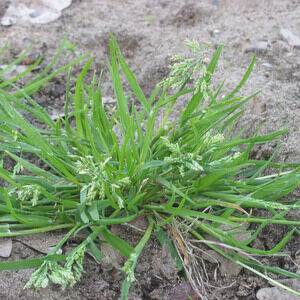 |
| Bahia Grass | NSW,VIC,TAS,SA,WA,NT,QLD | NSW(Jan-Apr, Nov-Dec); VIC(Jan-Apr, Dec); TAS(Mar); SA(Jan-Apr,Nov-Dec); WA(Nov-Dec); NT(Jun-Sep); QLD(Jan-Apr, Jun, Oct-Dec) |  |
| Bottlebrush | NSW,ACT,VIC,SA,WA,QLD | NSW (Apr-May); QLD(Apr); Australia wide (Sep-Dec) | 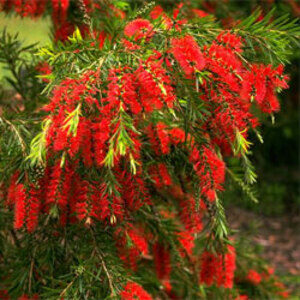 |
| Cocksfoot/Orchard Grass | NSW,ACT,VIC,TAS,SA,WA,QLD | NSW(Jan-Feb); QLD(Jan-Feb); Australia wide (Sep-Dec) | 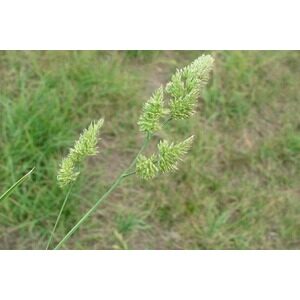 |
| Johnson Grass | NSW,NT,QLD | NSW(Jan-Mar, Oct- Dec); NT (Jan, Jun-Jul, Sep-Oct) QLD (Jan-Jun, Oct-Dec) | 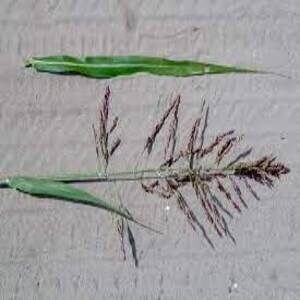 |
| London Plane Tree | NSW,ACT,VIC,TAS,SA,WA,QLD | Australia wide(Aug-Sep) | 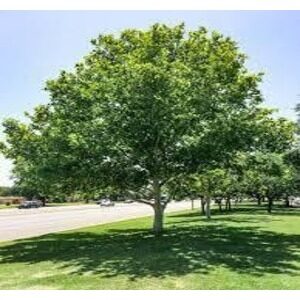 |
| Murray Pine/ White Cypress Pine | NSW,ACT,VIC,SA,WA,QLD | VIC(June-Sep); QLD(Jul-Sep); WA(Apr-Oct) Australia wide(Aug-Sep), |  |
| Paper-bark Tea Tree | NSW,VIC,SA,WA,NT,QLD | NSW(Jan-May, Sep-Nov); VIC(Nov); SA(Sep-Nov); WA(Feb, Sep-Nov); NT(Jul) QLD(Jan-Jun, Aug-Dec) |  |
| Paterson’s curse/Salvation Jane | NSW,ACT,VIC,SA,WA,NT | NSW(Jan, Sep-Dec); ACT, VIC (Sep-Dec); SA, WA, NT(Sep-Nov) |  |
| Plantain | NSW,ACT,,VIC,TAS,SA,WA,QLD | NSW(Jan-May, Aug-Dec); ACT(Jan-Feb, Apr, Oct-Dec); VIC(Jan-Mar, Sep-Dec); TAS(Jan-Feb, Sep-Dec); SA(Jan-May, Jul, Sep-Dec); WA(Sep-Nov); QLD(Jan-Apr, Jun, Aug-Dec) | 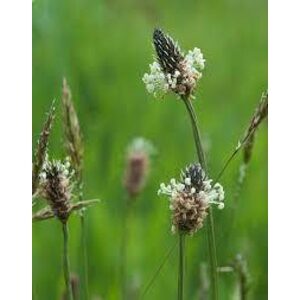 |
| Ryegrass | NSW,ACT,VIC,TAS,SA,WA,QLD | NSW(Sep-Nov); ACT(Jan-Feb, OCt-Dec); VIC(Jan-Feb, Aug-Dec); TAS(OCt-Dec); SA(Jan-Mar, Oct-Dec); WA(Oct-Nov); QLD(Sep-Nov) | 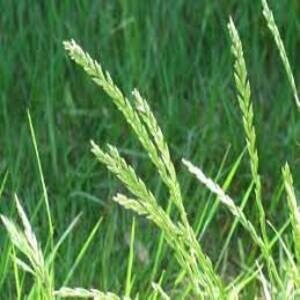 |
| Timothy Grass | ACT,VIC,TAS,QLD | ACT(Sep); VIC(Sep-Dec); TAS(Sep-Nov); QLD(Jan) | 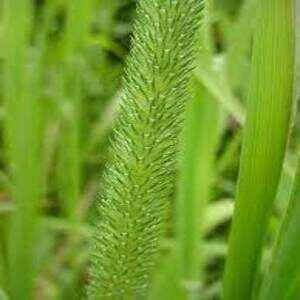 |
| Yorkshire Fog/Velvet Grass | NSW,ACT,VIC,TAS,SA,WA,QLD | NSW(Sep-Dec); ACT(Oct-Nov); VIC(Sep-Dec); TAS(Oct-Dec); SA(Oct); WA(Nov); QLD(Feb, Sep-Dec) | 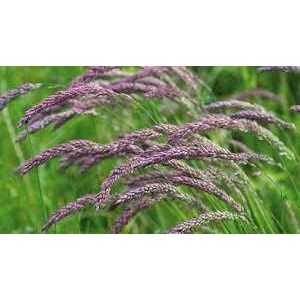 |
| Australian Pine/She Oak | NSW,ACT,VIC,TAS,SA,WA,QLD | NSW(Jan-Nov); ACT(Jan-May, July-Dec); VIC(Mar, May, Sep-Oct); TAS(Sep); SA(Mar-Apr, Aug-Oct); WA(Jul-Oct); QLD(Jan, Apr-Oct, Dec) | 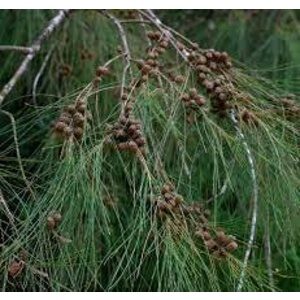 |
| Bermuda/Couch Grass | NSW,ACT,VIC,TAS,SA,WA,QLD | NSW(Jan-May, Aug-Dec); ACT(Jan-Feb); VIC(Jan-Apr); TAS(Oct-Dec); SA(Jan-Apr, Nov-Dec); WA(Jan-Mar, Dec); NT(Jan, June-Sep); QLD(Jan-May, Sep-Dec) |  |
| Canary Grass | NSW,ACT,VIC,SA,WA,QLD | NSW(Sep-Dec); ACT(Jan, Nov-Dec); VIC(Jan-Feb, Dec); SA(Jan, Nov-Dec); WA(Oct-Dec); QLD(Jan-Jun, Aug-Dec) | 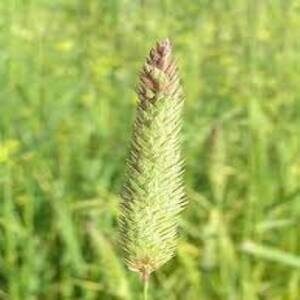 |
| Kentucky Blue/June Grass | NSW,ACT,VIC,TAS,SA,QLD | NSW, SA(Oct-Dec); ACT, VIC, TAS, QLD(Sep-Dec) | 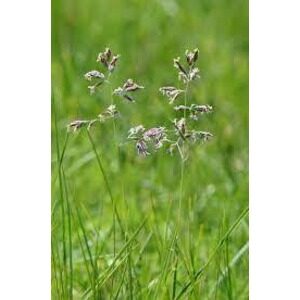 |
| English Oak | NSW,ACT,VIC,TAS,SA, | NSW, ACT, VIC, TAS(Sep-Oct); SA(Sep) | 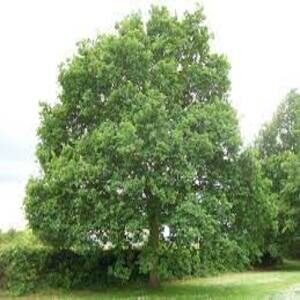 |
| Mango Tree | NSW,NT,QLD | NSW(Sep-Nov); NT(Jun-Nov); QLD(Jul-Sep) | 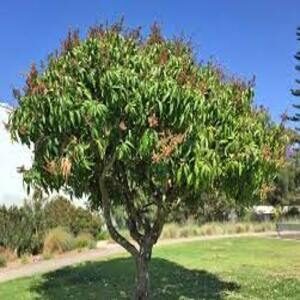 |
| Olive Tree | NSW,VIC,SA | NSW(Sep-Nov); VIC(Oct-Nov); SA(Sep-Nov) | 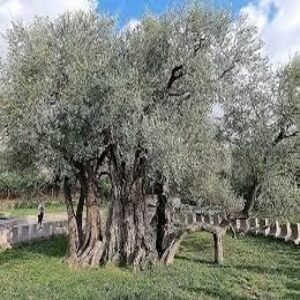 |
| Parthenium Weed | QLD | QLD (Jan-May, Sep-Dec) | 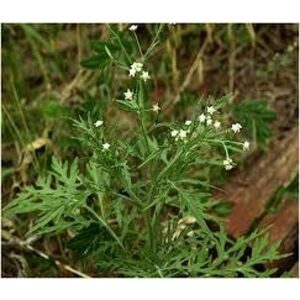 |
| Pellitory/Asthma weed | NSW,VIC,WA | NSW(Jan-Apr, Aug-Dec); VIC(Jan, Oct, Dec); WA(Sep-Oct) |  |
| Ragweed | NSW,QLD | NSW, QLD(Mar-May); | 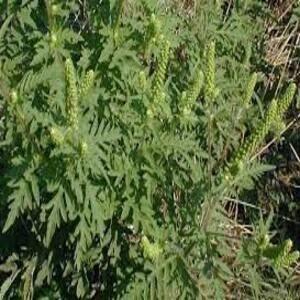 |
| Silver birch | NSW,ACT,VIC,TAS,SA,WA | NSW, ACT, WA(Sep-Oct); VIC(Aug, Oct-Nov); TAS, SA(Sep-Nov) |  |
| Wild Oat | NSW,ACT,VIC,TAS,SA,WA,QLD | NSW(May-Nov); ACT(Sep-Oct); VIC(Aug-Dec); TAS(Oct-Dec); SA(Sep-Nov); WA(Oct-Nov); QLD(Jan, Mar, Jun-Dec) | 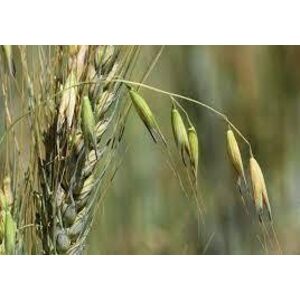 |
Asthma Treatment For Patients Who Are Allergic To Pollen
Asthma is a chronic respiratory disease that makes breathing difficult because the airways are inflamed and constricted. Pollen allergies can frequently cause asthma symptoms like coughing, wheezing, and breathing difficulties. It is crucial to consult your healthcare professional if you think a certain food intolerance may be causing your symptoms. A few treatments have shown promise in helping persons with pollen-allergic asthma:- Corticosteroids for inhalation and other long-term asthma management medications help lessen inflammation and prevent asthma symptoms. With the aid of fast-acting medications such as short-acting bronchodilators, asthma symptoms can be swiftly relieved.
- An individual’s reactivity to common allergens like pollen can be lessened via immunotherapy, which involves allergy injections. The patient will receive a series of injections over this treatment, each containing progressively higher amounts of the allergen.
- To effectively control asthma, allergens like pollen must be avoided. Staying inside, using the air conditioner, and keeping the windows and doors closed may be the best action on days with a high pollen count to minimise pollen exposure.
- People with asthma should collaborate with their healthcare professionals to develop a formalised asthma action plan to manage their condition and prevent asthma episodes effectively.
- Additional treatments like oxygen therapy or bronchial thermoplasty may be necessary for individuals in dire situations.
It is important to be knowledgeable about first aid and emergency asthma management, particularly if you or a close one suffers from asthma. Having a predetermined course of action for dealing with an asthma attack is crucial in case of an unexpected episode. This plan should include information on the person’s medications, peak flow rate, and emergency protocols.
Travelling With Asthma
Travelling with asthma and allergies might be intimidating, but it doesn’t have to be. You can have a safe and enjoyable journey with a little forethought and planning.- First and foremost, ensure that you have enough medication and supplies. It is critical to bring your inhaler and any other prescriptions in their original packaging before travelling.
- The next thing to do is learn as much as possible about the area you’ll be staying in. Suppose you are aware of the allergies and air quality in the region. In that case, you can take precautions and have a more pleasant holiday.
- Lastly, and most importantly, establish a plan. For example, to avoid allergic reactions, pack a large amount of food, avoid visiting places that may trigger your asthma or allergies, and keep your prescription medication close to hand.
First Aid For Allergic Reactions
An allergic reaction can have a wide spectrum of severity and, in extreme circumstances, can be fatal. The following are some of the steps that you can take:- If the person is experiencing breathing problems, call for help immediately at 000.
- Keeping calm and reassuring the person having an allergic reaction is essential.
- Allergies and other potential triggers should be removed (such as a bee sting or food like milk, eggs, and nuts ).
- You should give the person their epinephrine auto-injector (such as an EpiPen) if you know how to use one and they have a prescription for it.
- When a person experiences hives, swelling, or trouble breathing, their clothing should be loosened.
- The patient should stay in their current position, lying down with their feet propped up.
- If you know how to perform CPR, begin it if the victim is unresponsive.
If you do not have training in cardiopulmonary resuscitation (CPR), you should seek training as soon as possible from a certified first aid expert. These recommendations are meant as a starting point. Still, you should always follow the advice of the individual’s physician or allergist.


